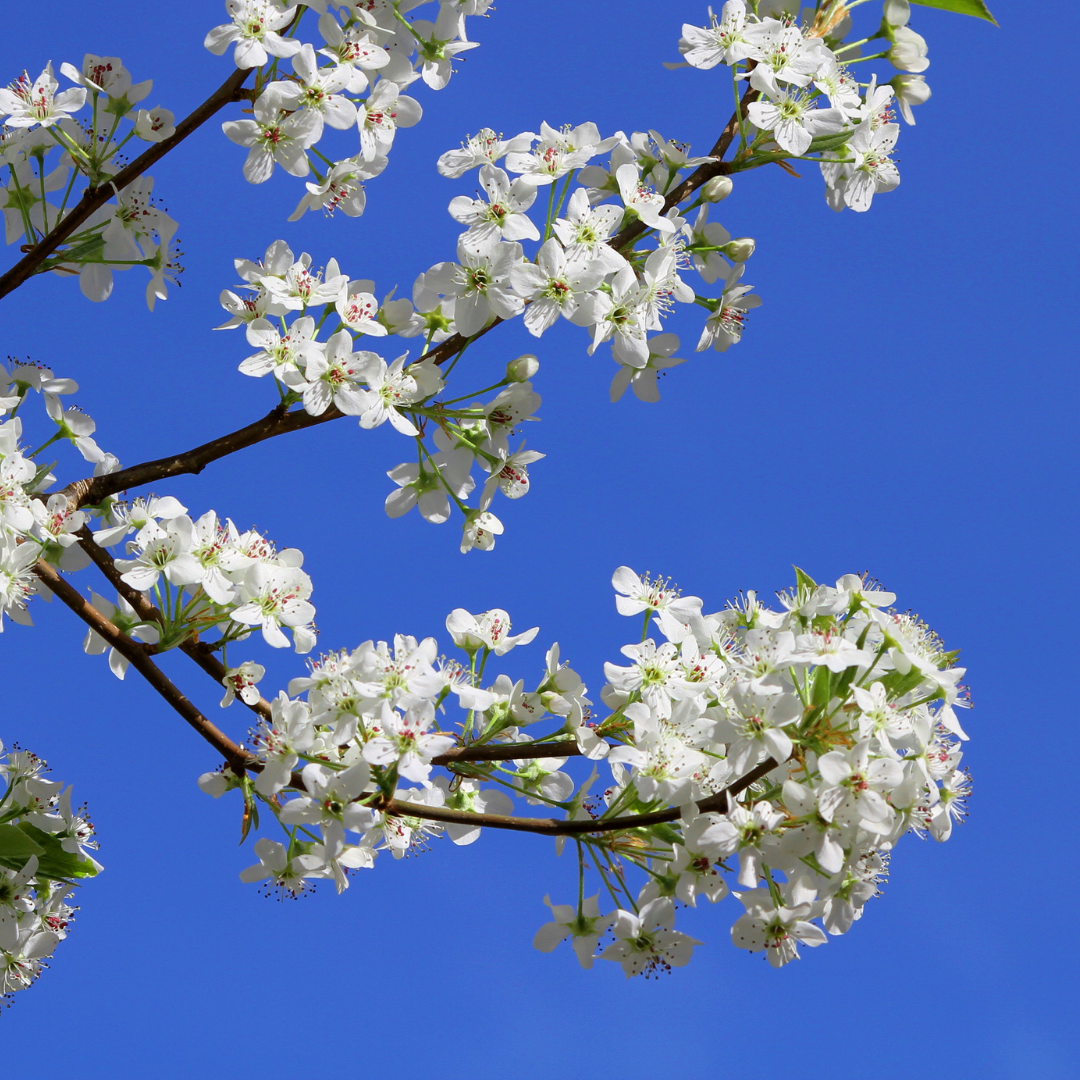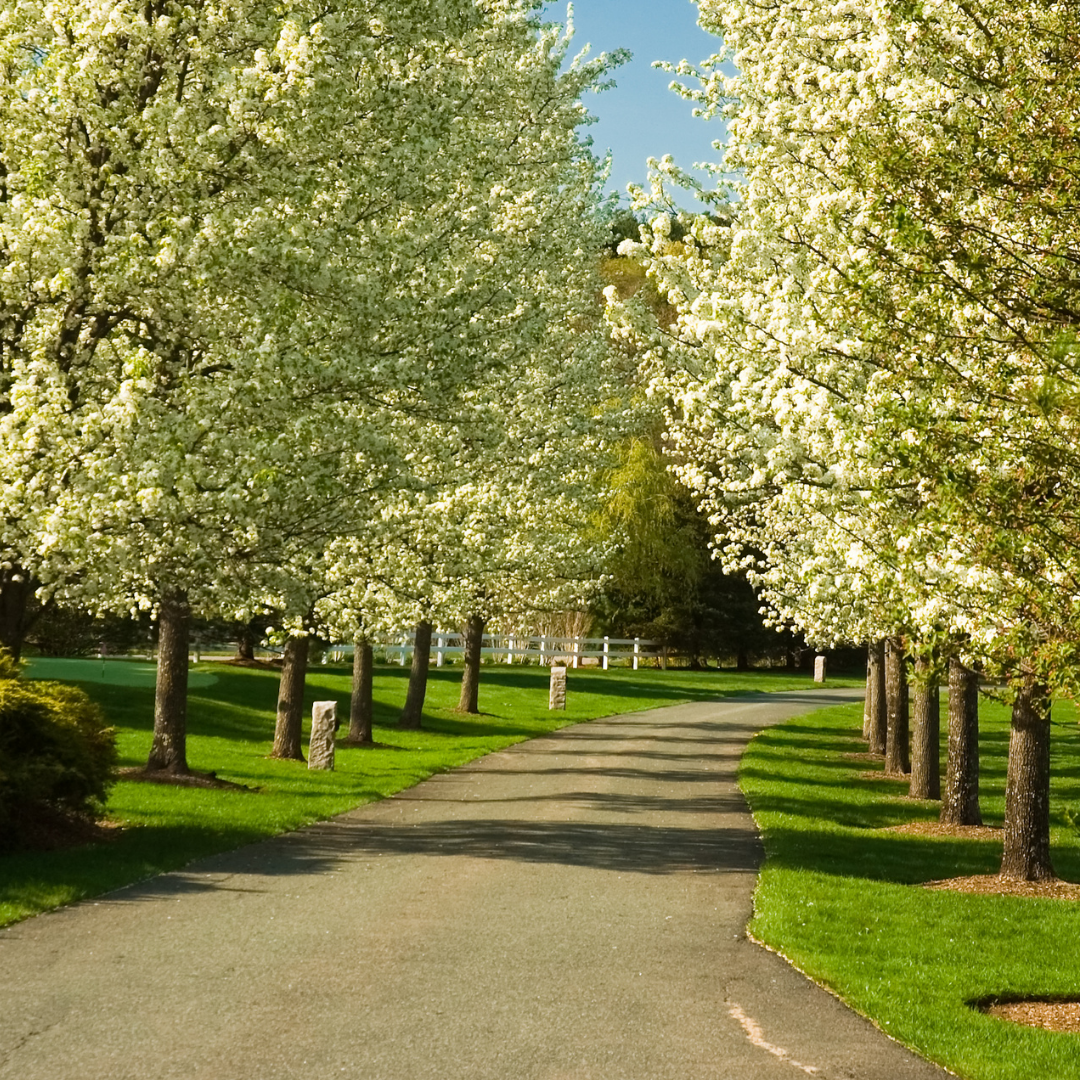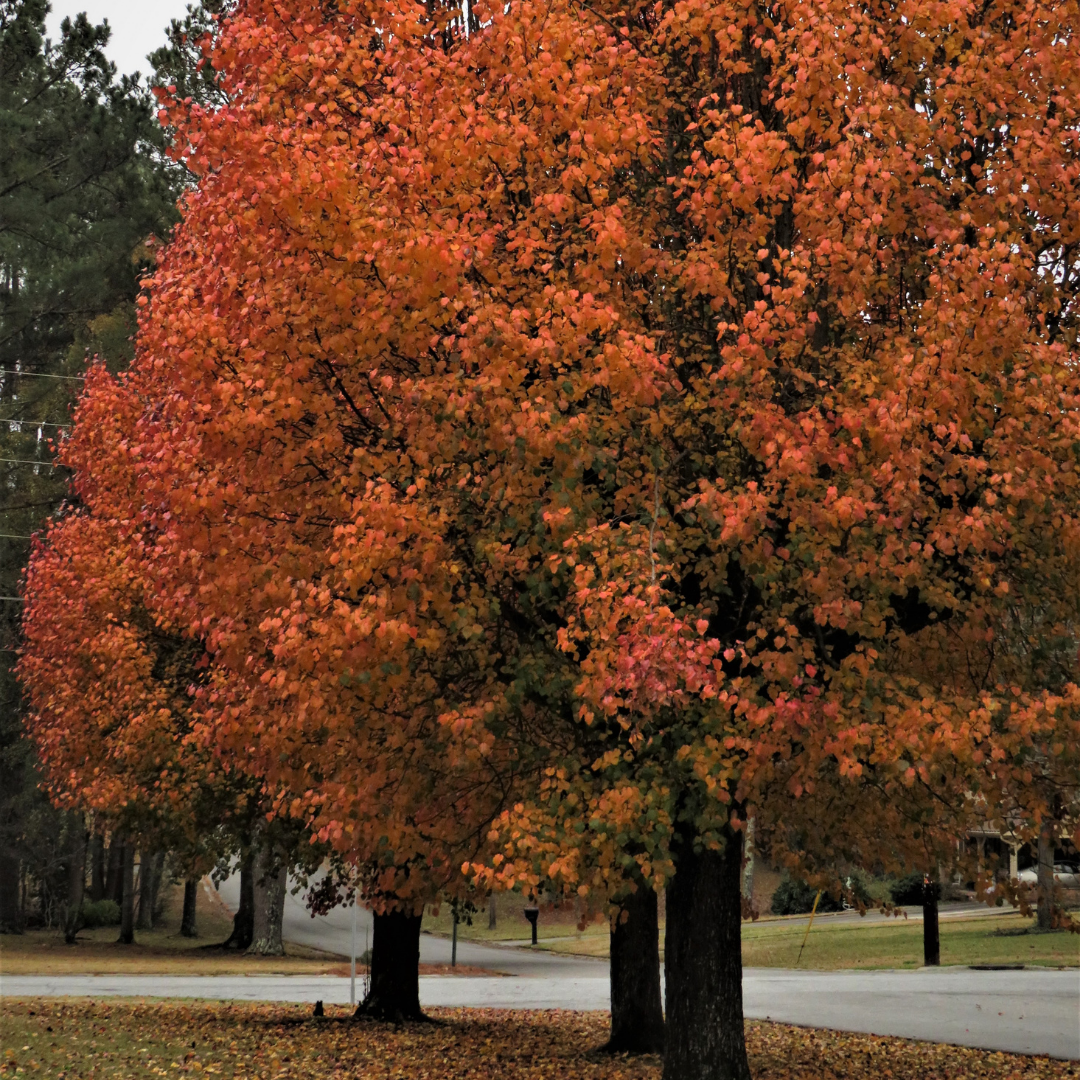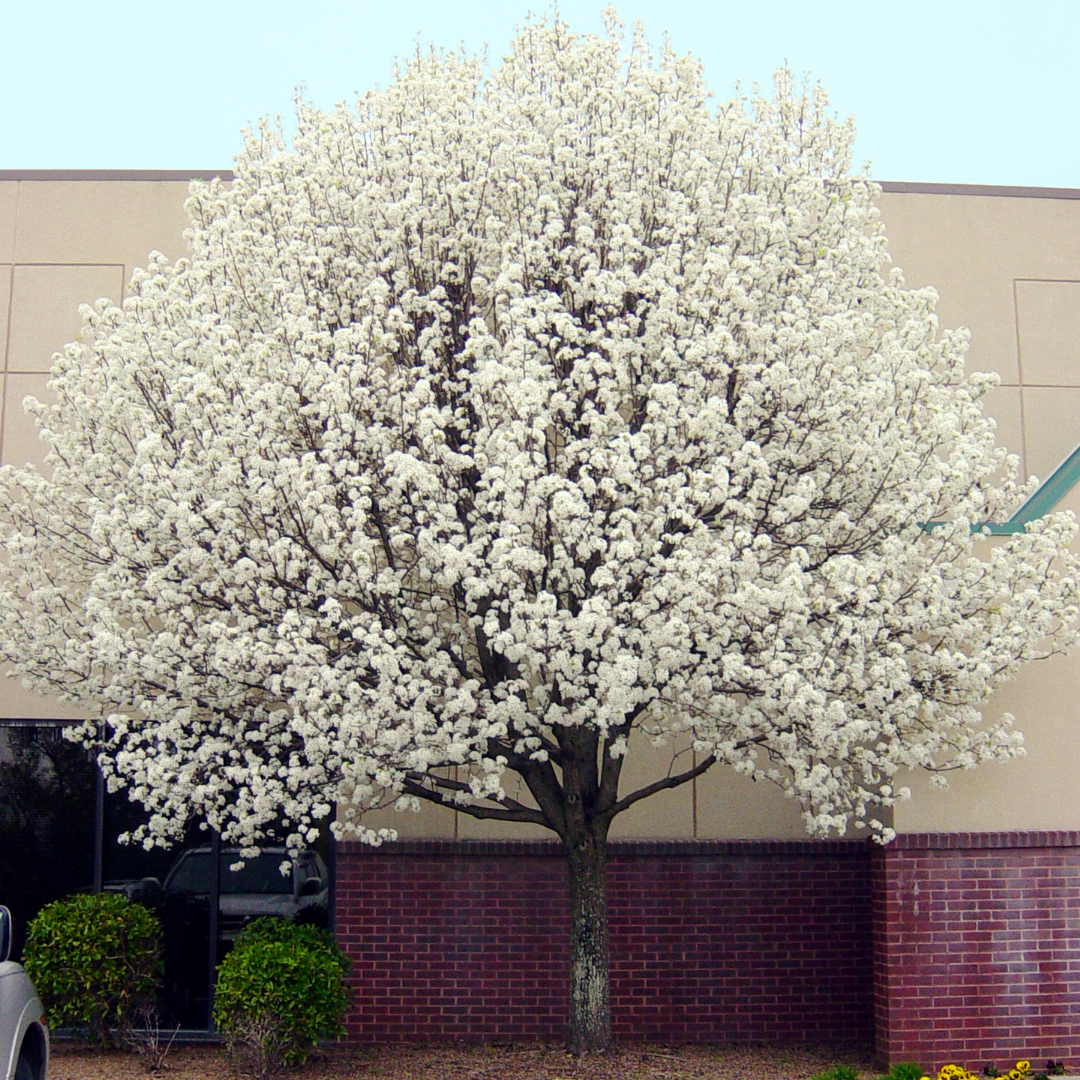Blog
The Sweet Smell of Spring and Fish

by Danie Frevola, Research Ecologist
A question I ask myself each and every spring (besides “What day is Mother’s Day this year?”) is “Why would someone want a pear tree that doesn’t actually make pears and smells like rotting fish?”.
I actually ask myself this every season, but especially in the spring because the trees are in peak bloom with their fishy smell reaching every house in the neighborhood.

Bradford pears, or simply pear trees (Pyrus calleryana), bloom very early in the spring and their strong fishy odor is unpleasant enough to make you wish spring was still months away. Despite this, pear trees are found in every neighborhood and apartment complex in the Midwest (literally every single one, I’ve checked them all).
Pear trees were first introduced to the United States in 1909, but by 1960, people had fallen deeply in love with their snow-white flowers and drastic fall foliage. The trees were quickly planted in every other yard and soon after they were planted, they also began popping up in areas they weren’t planted—such as your neighbor’s yard, along the interstate, and in natural areas like prairies and forests.

Bradford pears are actually a cultivated variety of Callery pears. (A cultivar is an artificially selected species that has been bred to contain some traits of the original variety, while lacking others.)
In the case of Bradford pears, they were cultivated to have the bright white flowers and red fall foliage of Callery pears, but actually lack the ability to successfully reproduce. However, the cultivated Bradford pear had other plans…
While Bradford pears cannot reproduce with other Bradford pears, they can (and do) cross pollinate with Callery pears (and other cultivated varieties).
In fact, Bradford pears have been so successful at cross-pollinating that in 2018, Ohio banned the selling of all Callery pear varieties (along with 37 other species; Ohio Department of Agriculture).
Though Callery pear was officially banned in 2018, it is actually still able to be sold until 2023. Why? Because the Callery pear has a *complicated* relationship in Ohio. Many different cultivars of Callery pear were created in Ohio.
Because of this, many nurseries rely on Callery pear sales as a major source of income (Culley, 2017). To ensure banning the pear wouldn’t sink any small businesses, the Ohio Department of Natural Resources gave nurseries 5 years to sell their stock of pears—meaning you will no longer be able to buy Bradford pears (or any cultivar) in Ohio after this year.

Though Callery pear and its cultivars have already made a large impact on the natural world, it is not too late to control the population from expanding further. One of the first things you can do is look at your own landscaping. Do you have a pear tree in your yard? If so, consider cutting the tree down and replacing it with a native such as Eastern Redbud, which bloom around the same time as pear trees and have stunning purple flowers. Or in place of your pear, maybe plant a Serviceberry tree- which has similar snow-white flowers as pear trees, but also has nutritional fruit that native wildlife loves.
If you are removing a large tree by chain sawing, also be aware that the trees have gnarly spurs (look similar to thorns) on them that could definitely hurt someone!
References
https://agri.ohio.gov/divisions/plant-health/invasive-pests/invasive-plants/
Culley, T. M. (2017). The rise and fall of the ornamental Callery pear tree. Arnoldia, 74(3), 2-11.